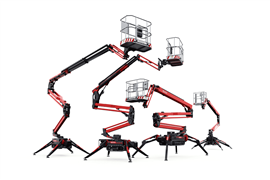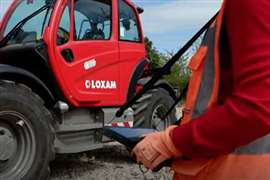‘Cautious optimism’ for German machinery
03 August 2016
German construction equipment manufacturers are said to be remaining “cautiously optimistic” at the half-way point of the year, with the 2016 forecast still suggesting growth of 3%.
Building material machinery was said to be seeing “subdued prospects”, though, with the sector lacking growth markets.
Overall, Germany’s VDMA (Verband Deutscher Maschinen- und Anlagenbau) Construction Equipment & Building Material Machinery Industry Association said that uncertainties made future prospects hard to assess.
Johann Sailer, chairman of the association, said, “After a great Bauma trade fair in April, we are again in the midst of our daily business – which holds a number of challenges and uncertainties.”
After six months of 2016, turnover among member companies in the construction machinery sector was found to be similar to last year’s level, and the VDMA said that the trend for the rest of the year pointed slightly upwards.
Last year’s overall turnover for the sector of €13.3 billion – comprising €9 billion for construction equipment and €4.3 billion for the building material machinery sector – is likely to be mirrored by the sector in 2016, said the VDMA.
Markets mixed
It said that the mixed nature of the markets was once again the determining theme for German manufacturers of construction equipment.
North America and the Middle East, two of the most important growth markets of the past few years, were said to be seeing drops in machinery sales this year – not least as a result of the continuing weakness in the oil and gas sector.
This was said to be compounded by the still weak markets of Latin America, Africa and large parts of Asia.
Formerly the largest market, China is still not back on its feet and will, after five years of recession, have lost close to an accumulated 80% of its volume, according to VDMA figures. In the Asian region, it is only the Indian construction equipment market that is growing, stimulated by increased investments in road building.
The VDMA said that the European market looked positive for 2016, with France – where the construction machinery business is benefiting from a special depreciation scheme – a driver of growth, along with southern European countries.
Northern and Western Europe are again stable, it said. The German market was said to be at a high level and able to post further growth in 2016. The VDMA said that only Central and Eastern Europe fell short of expectations this year.
It added that the construction machinery market in Turkey constituted a special case. Because of recent strong growth, questions are being raised about overheating and the danger of a bubble economy. The VDMA said that together with the political instability, the Turkish construction machinery market could still see a “hard landing”.
Slight increase
While a drop is expected in global construction machinery sales as a result of regional developments, German manufacturers were said to be confident of a slight turnover increase of 3% in the sector.
“This is primarily due to the strong European market,” Sailer said, but he also made it clear that growth would not be evenly spread for all manufacturers.
“Depending on where a company’s focuses lie, individual results could still be on the negative side.”
The VDMA said that the building material plant and machinery business was always subject to less volatility than the construction machinery sector, thanks to its long-term nature. However, it added that manufacturers were dependent on long-term stable growth markets and these were lacking at present.
It said that only Central Europe, India and North America could be rated as satisfactory. It felt that it was primarily the breakdown of the “immensely important” Russian market that caused major problems for manufacturers, adding that unfortunately, it did not look as if another market could make up for it in the short term.
Overcapacity
It said the overcapacity on the customers’ side presented a major challenge for manufacturers. This was felt to be particularly, though not exclusively, true for the cement sector.
Sailer said that when it came to excess capacity, the sector also automatically thought of China these days.
“We don’t expect suppliers from China to flood the market with their equipment but the trend is clear – when domestic markets are weak, companies shift to export markets.”
He said it was fair to say for all sub-sectors that there were huge political and economic uncertainties in many areas, and there was growing instability.
“We don’t want just to keep talking about crises, and many current issues do not even have a direct impact on the construction sector. But obviously, news of this kind always affects the investment climate among our customers,” said Sailer.
The VDMA said it was all the more important to stress that the German construction equipment and building material machinery industry was a growth sector – and would be back on track in emerging markets sooner or later.
STAY CONNECTED



Receive the information you need when you need it through our world-leading magazines, newsletters and daily briefings.
CONNECT WITH THE TEAM











